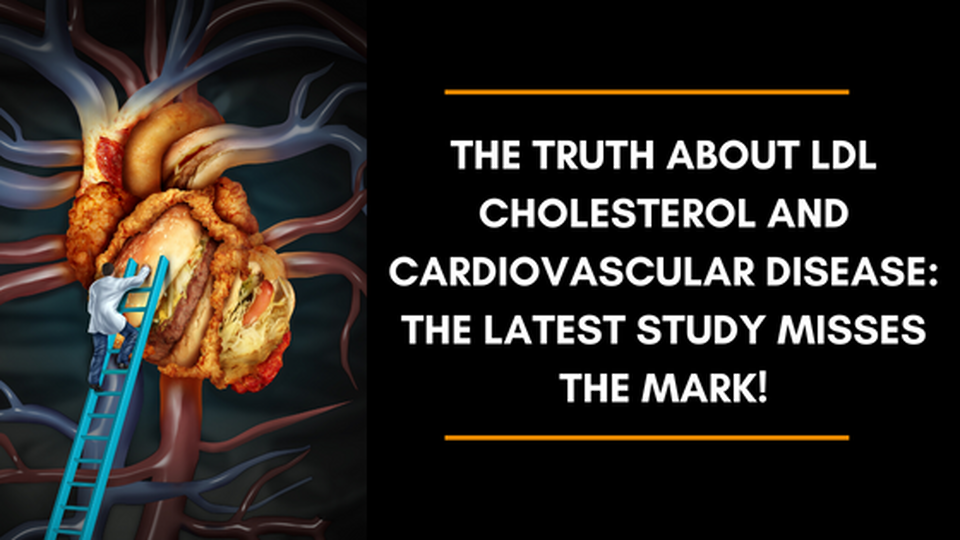Introduction
Cardiovascular disease (CVD) remains a significant health concern, accounting for numerous deaths worldwide. For decades, high cholesterol has been singled out as a primary culprit, leading to a widespread belief that reducing cholesterol levels is essential for preventing CVD. However, recent research challenges this conventional wisdom, suggesting that the relationship between cholesterol and CVD is more complex than previously thought. This controversial argument will delve into the notion that high cholesterol alone may not be the sole cause of cardiovascular disease.
The Inadequacy of Cholesterol as a Standalone Marker
a) Cholesterol’s physiological role: Cholesterol is an essential component of cell membranes, hormone production, and bile acid synthesis. It is necessary for various bodily functions, indicating that it cannot be dismissed as inherently harmful.
b) Lack of correlation between high cholesterol and CVD: Numerous studies have failed to establish a consistent link between high cholesterol levels and CVD. In some cases, individuals with low cholesterol suffer from cardiovascular events, while others with high cholesterol remain unaffected.
c) The role of other risk factors: CVD is a multifactorial disease, with numerous risk factors contributing to its development. Factors such as smoking, hypertension, obesity, and diabetes play substantial roles in CVD, often overshadowing the impact of cholesterol levels alone.
The Lipid Hypothesis Revisited
a) Flaws in the original research: The widely accepted Lipid Hypothesis, proposed by Ancel Keys, claimed that dietary saturated fats and cholesterol directly led to increased blood cholesterol levels and subsequent CVD. However, this hypothesis was based on flawed research and cherry-picked data, excluding contradictory evidence.
b) Lack of causation: Studies examining the effects of dietary interventions on cholesterol levels have yielded inconsistent results. Lowering cholesterol through diet or medication has not consistently translated into reduced CVD risk, indicating that cholesterol may not be a direct causative factor.
c) Role of inflammation: Growing evidence suggests that chronic inflammation plays a pivotal role in the development of CVD. Inflammatory markers, such as C-reactive protein, maybe more accurate predictors of cardiovascular events than cholesterol levels alone.
The Role of Particle Size and Oxidation
a) LDL particle size: Cholesterol is transported in the bloodstream by lipoproteins, primarily low-density lipoprotein (LDL) and high-density lipoprotein (HDL). Recent research indicates that the size and density of LDL particles are more significant predictors of CVD risk than total cholesterol levels. Small, dense LDL particles are associated with increased atherosclerosis and plaque formation.
b) Oxidized LDL: The oxidation of LDL particles renders them more harmful to arterial walls, triggering an inflammatory response and the subsequent development of atherosclerosis. Oxidized LDL may be a more accurate indicator of CVD risk than total cholesterol levels alone.
Conclusion

While high cholesterol has long been vilified as the primary cause of cardiovascular disease, this controversial argument suggests that the relationship between cholesterol and CVD is far more complex.
The inadequacy of cholesterol as a standalone marker, the flaws in the Lipid Hypothesis, and the emerging evidence on particle size and oxidation challenge the prevailing dogma.
Recognizing the multifactorial nature of CVD, including the role of inflammation and other risk factors, is essential for a more comprehensive understanding of the disease.
Further research and a shift in focus toward personalized risk assessment are needed to refine our understanding of the complex interplay between cholesterol, inflammation, and cardiovascular health.
By challenging conventional wisdom, we can pave the way for more effective preventive strategies and targeted interventions to reduce the burden of cardiovascular disease.

